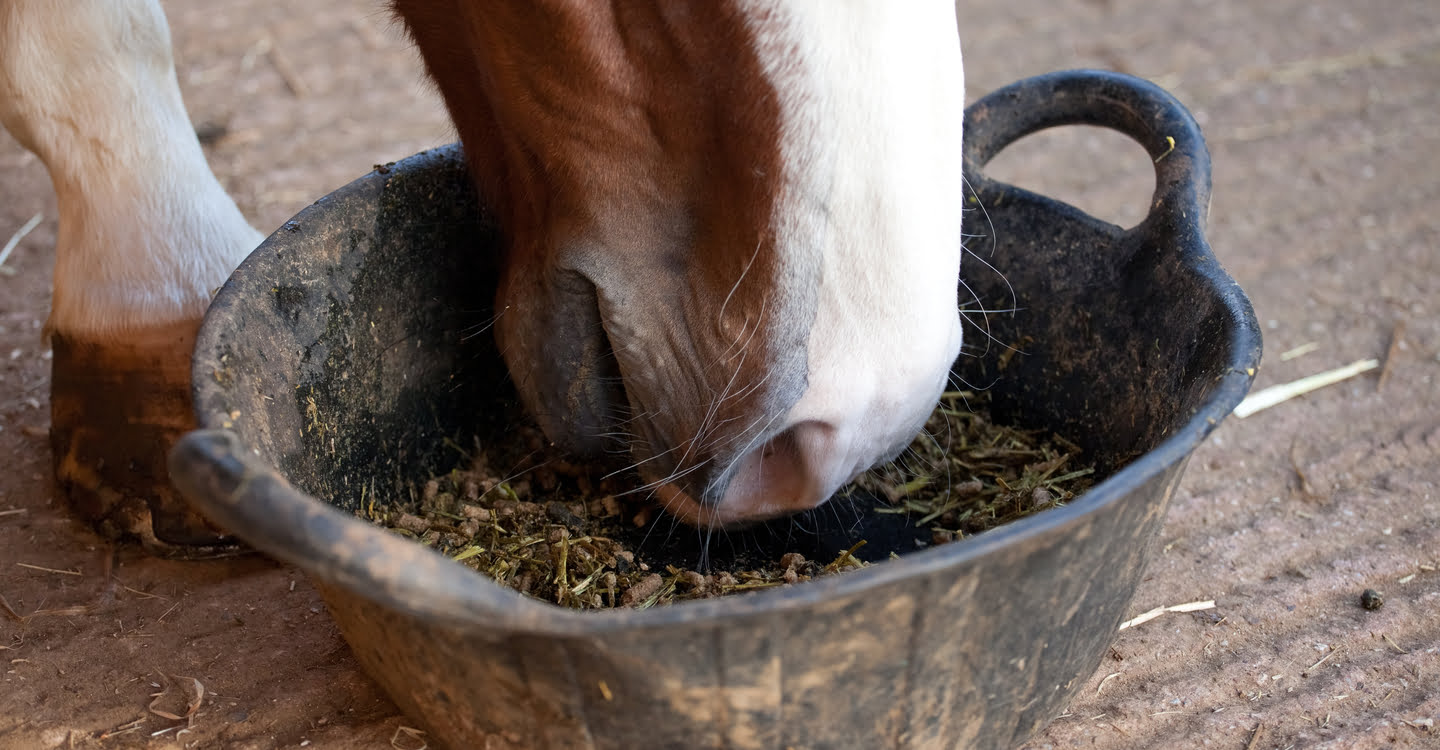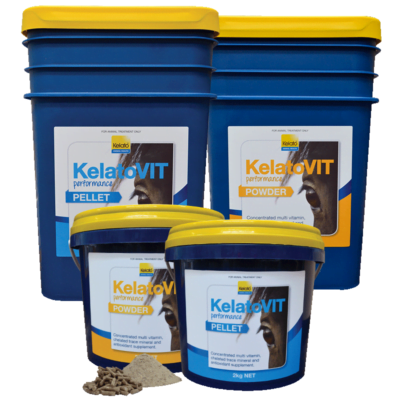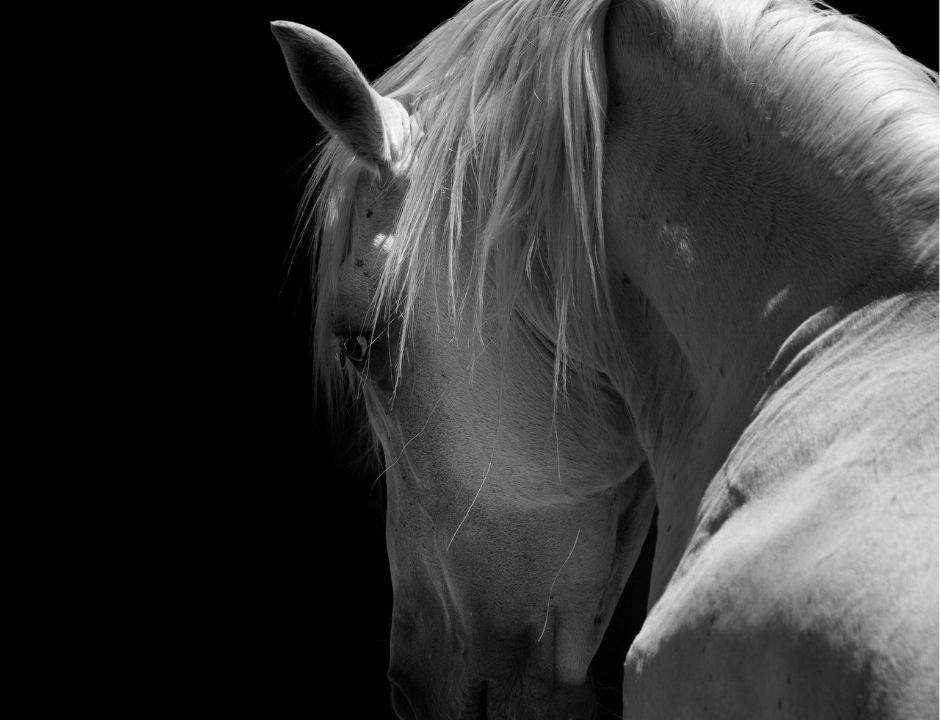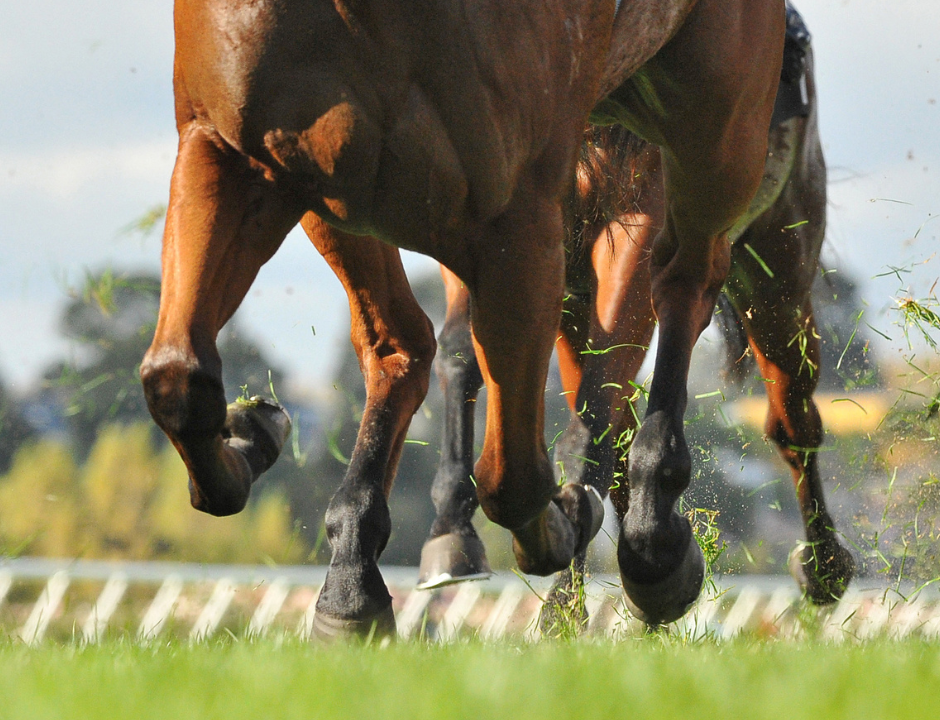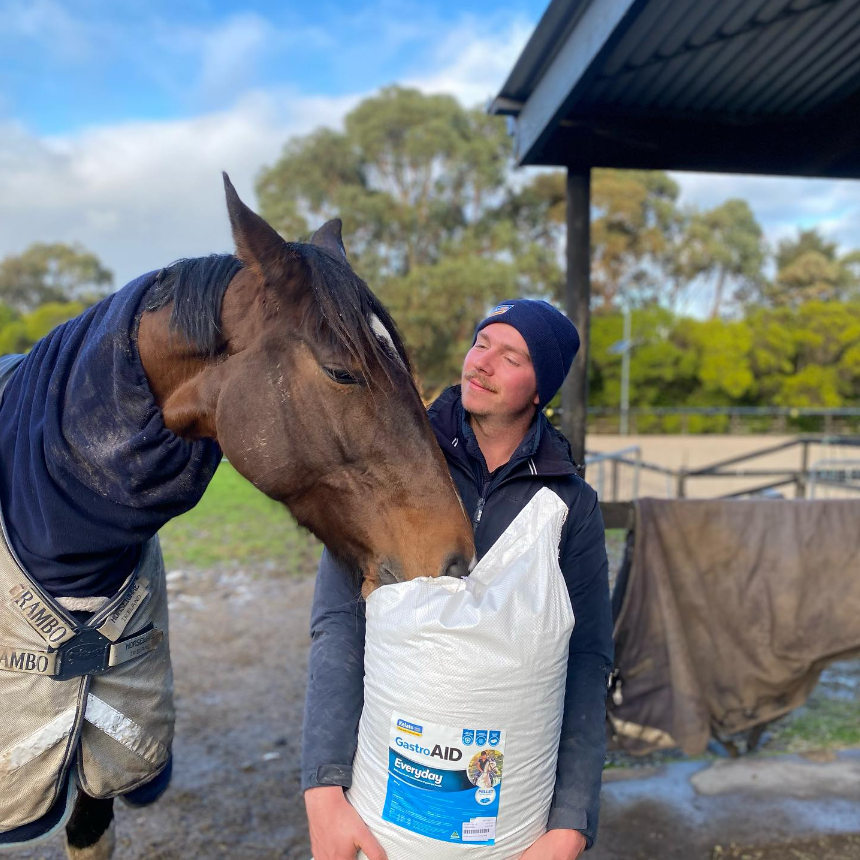With the overabundance of concentrate feeds and supplements available to horse owners, selecting the right feed programme for your horse may seem like a daunting task. The evolution of the internet has brought knowledge to our fingertips and with a single click of a button we can quickly access all sorts of information. However, search and social media outlets are also fraught with misinformation. A single question of “what should I feed my 16hh OTT Thoroughbred?” on an online forum can result in hundreds of varied comments, all of which provide different advice without knowing the full history and details of the horse.
So how are you meant to know what to do? This article focuses on the basic feeding principles for horses. This will provide you with a starting point and will hopefully encourage some critical thinking when it comes to selecting feed and ensuring the vitamin and mineral requirements of your horses are met, particularly in the colder months of winter where it can be more difficult to manage.
Treat each horse as an individual
The key thing to remember is that each horse should be treated as an individual. Just because your friend’s horse is thriving on specific feed types and supplements doesn’t necessarily mean they are appropriate for your own horse. When designing a daily ration, you need to consider age, breed, weight, body condition score, workload and any past or present issues (e.g. poor dental health, colic, laminitis, insulin resistance, tying-up and digestive conditions).
Body Condition Score
The first step to formulating a ration for your horse is to assess their body condition score (BCS). Your horse’s BCS will give you a good idea of how fat or thin they are. When condition scoring, it is important to view the horse from different angles and palpate (touch) their body to identify any areas of subcutaneous fat. While it is important to assess the whole body, there are five key areas to examine – the crest, behind the shoulder, across the ribs, the croup and the head of the tail. In Australia, we use a BCS scale of 0 to 5, with 0 being emaciated, 5 as extremely fat, and 3 as good. The ideal BCS can vary slightly depending on the discipline.
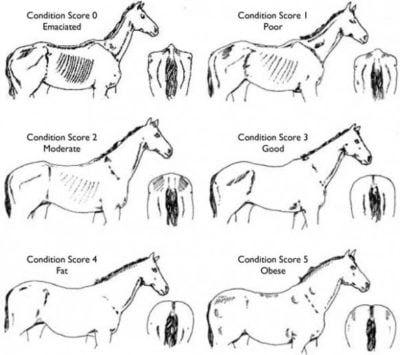
Natural Feeding Behaviour
Nowadays, when discussing horse nutrition, the first question usually asked is “which hard feed should I give my horse?”. It appears that with the expansion of the feed industry we have forgotten the most important component of every horse’s diet – forage!
Horses are free ranging, non-ruminant herbivores that eat a wide variety of forages. They are classified as “grazers” in that they are adapted to eat small amounts on an almost continuous basis. In fact, studies of grazing horses have shown that they will spend up to 20 hours a day grazing. That’s a lot of time spent eating! Every feed programme should aim to mimic the natural feeding behaviour of the horse to maintain optimal digestive health and function.
Forage
What is classified as forage? Forage, or roughage, includes pasture, hay, chaff and other fibre sources such as beet pulp and soy hulls. Structural carbohydrates are typically found in the cell wall of the plant and are often referred to as fibre. Analytically, the major carbohydrates associated with the cell wall are cellulose, hemicellulose and lignin. As mentioned earlier, fibre is fermented by microbes in the hindgut and provides the horse with a source of energy.
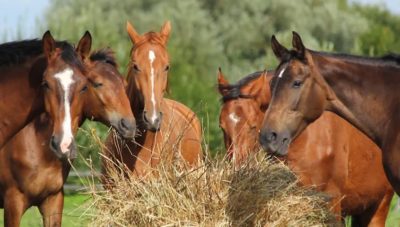
We commonly hear horse owners state “I want to feed my horse naturally”. The best way to feed your horse as naturally as possible is to provide them with free choice access to pasture. Obviously, there are many variables that may restrict our ability to provide constant access to grazing, including drought, overgrazing, health concerns, agistment, stabling, etc. In these situations, we need to look at other sources of roughage such as hay and high fibre feeds to help meet the horse’s daily requirements.
Minimum Forage Requirements
So how much forage does my horse need? The general rule of thumb is to provide your horse with at least 1.5% of its body weight in forage per day. This works out to be 7.5kg per day for an average 500kg horse. The important thing to remember is when pasture quality is poor or your horse doesn’t have 24/7 access to grazing, most of their forage requirements will have to be met with adequate supplementary hay. We also can’t forget that horses are meant to be grazing for most of the day and have a digestive system designed to process an almost continual intake of forage. In an ideal world, your horse will have constant access to forage and not be exposed to extended periods of fasting. Of course, disruptions such as work, school and other commitments prevent us from being with our beloved equine companions all the time. You may need to consider popping a round bale in the paddock or using a slow feeder such as a hay net to provide your horse with something to pick throughout the day/night.
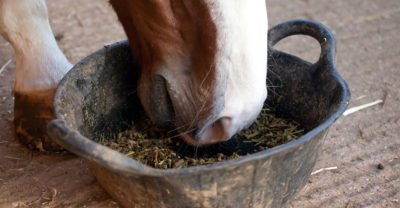
Other Fibre Sources
In Australia, we have a slight obsession with chaff. Chaff can provide an additional source of fibre, but it shouldn’t make up a significant portion of the “roughage” part of the diet when long-stemmed forage options are available (e.g. pasture and hay). Where possible, provision of adequate long-stemmed forage is much more important, as it encourages chewing and saliva production. Saliva contains bicarbonate and acts as the horse’s natural buffering mechanism to prevent the stomach contents from becoming too acidic. Horses chew more when consuming long-stemmed forage and therefore produce larger quantities of saliva. This helps to reduce the risk of digestive conditions such as gastric ulcers.
There will be situations where horses benefit from alternative sources of fibre, particularly if pasture and hay are scarce. For example, older horses with compromised dental health may not be able to properly chew long-stemmed forage or horses in hard work may benefit from extra calories than those provided by pasture and hay. Beet pulp and soy hulls are termed “super fibres” because they are highly digestible and provide similar energy levels to some grains. Since the calories are coming from fibre, they provide the horse with a “cool” (slow release) form of energy.
Water
Water is vital for the health and wellbeing of all horses. When discussing horse nutrition water is often an overlooked nutrient, even though horses can’t survive for as many days without water as they can without feed. Water requirements depend on the magnitude of water lost by the body. Water is lost in the urine, manure, respiratory gases and sweat. These losses are affected by environmental conditions and the health, physiological state and physical activity of the horse.
A 500kg horse at rest in a moderate climate will generally consume between 15 and 35L of water per day, and this can increase significantly in hot, humid conditions. It may seem obvious, but ensure your horse always has access to fresh, clean water in both their paddock and stable. Horses should not be without water for even 2 or 3 hours, which is an important consideration when travelling and competing.
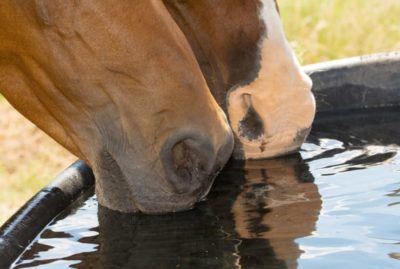
Energy
An adequate supply of energy from the diet is crucial for the maintenance of bodyweight as well as the storage and availability of substrates needed to fuel muscular work. Energy should be available from a combination of sources.
The two main sources of energy in horse feeds are:
Carbohydrates
- Structural Carbohydrates
Structural carbohydrates consist of cellulose, hemicellulose and pectins which are primarily found in pasture, hay, chaff and high fibre feeds. It is important to provide your horse with a minimum of 1.5% of their bodyweight in forage per day. Structural carbohydrates are fermented by microbes in the hindgut, which provide the horse with a source of energy in the form of volatile fatty acids (VFAs).
Provision of adequate good-quality forage is not only important for intestinal health, but also increases water consumption and acts as a water/electrolyte reservoir in the hindgut. This helps to minimise the risk of dehydration during the ride. However, for some horses forage alone may not meet all of their energy requirements and additional supplemental energy sources may be required. High energy fibrous feeds such as beet pulp and soy hulls can be of benefit. Other energy options are discussed below.
- Non-structural carbohydrates
Non-structural carbohydrates consist of simple sugars and starches. Starch is the principle component of cereal grains, making up approximately 50% of oats and 70% of corn. Cereal grains are processed by mechanical (rolling, grinding), thermal (roasting, micronising) or thermo-mechanical (flaking, extruding) methods into dry or wet (steam flaking, pelleting, extrusion) conditions in order to maximise starch digestibility in the horse’s body.
Starch is broken down in the small intestine and absorbed as glucose. It is then stored as muscle and liver glycogen that can be broken down during exercise to fuel muscle contraction. Muscle glycogen is a versatile fuel for energy generation during exercise, but care must be taken when feeding starch to horses. Large grain meals can result in digestive upset and horses with metabolic issues such as insulin resistance or tying up benefit from a low starch diet.
Fat
Although horses evolved on diets low in fat, they are able to digest and utilise up to 20% of the diet as fat, if suitably introduced. Vegetable oils such as canola oil and soybean oil are common sources of fat in the horse’s diet. Fat provides roughly two times more energy than an equal weight of corn, oats or barley. So less is needed to fuel body processes. Oils don’t contain sugar or starch and therefore provide an alternative energy source to feeding grains.
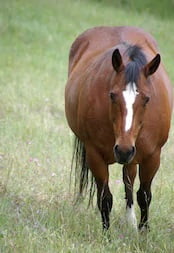
Protein
Protein is primarily not fed as an energy source because metabolism of amino acids to useable energy is inefficient compared to metabolism of carbohydrates and fats. Working horses need a certain level of dietary protein to build and repair muscle tissue and to replace the protein lost in sweat. However, protein levels that exceed the horse’s requirements are linked to increased heat production and earlier fatigue during exercise due to the higher urea and acid levels. A higher protein diet can also increase urine production because of the need to excrete the extra nitrogen. The higher urinary water loss increases water requirements and may exacerbate dehydration during exercise.
Protein is made up of building blocks called amino acids. Amino acids can be classified as “non-essential” and “essential”. The horse can produce non-essential amino acids, but must gain essential amino acids from its diet. These essential amino acids must also be present in the right quantities to build muscle. If the horse does not consume adequate quantities of an essential amino acid, muscle building simply stops.
Protein quality is also important. Rarely are diets lacking in crude protein, but rather they are lacking quality protein. Some protein sources have a very similar essential amino acid profile to muscle. This is useful when it comes to providing the right building blocks to build muscle protein. This type of protein is classified as “high quality protein”. An example of high-quality protein is soybean meal. This is why it’s important to read the back of the feed bag! Have a look at the ingredients list. Does the manufacturer state what source of protein they use?
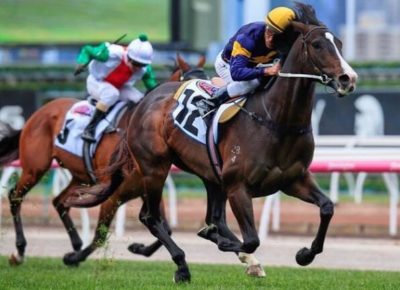
Vitamins & Minerals
Vitamins and minerals are essential for numerous functions in the horse’s body. As exercise levels increase so too does the need for additional vitamins, minerals and antioxidants. Ensuring your horse’s diet is fortified with optimal levels of these nutrients is key for performance and general well-being. Balance is also important, as too much of one nutrient can negatively affect the absorption of another.
Forage-only or forage and cereal grain diets are typically deficient in vitamins and minerals. So, if your horse can maintain its body condition on forage alone or if you are feeding a home-mixed grain ration, you will need to provide additional vitamins and minerals. In this situation, a vitamin and mineral supplement is ideal to top up those essential nutrients in the diet. Kelato’s KelatoVIT performance is a complete all-in-one multivitamin, mineral and antioxidant supplement for horses to help ensure their nutrient requirements are met. The great thing about KelatoVIT performance is it doesn’t contribute to the calories in the diet, so this gives you the flexibility to increase/decrease the energy sources in your horse’s diet without compromising the vitamins and minerals.
A high-quality commercial feed produced by a reputable manufacturer should contain appropriate levels of vitamins and minerals in the correct ratios. If fed at the recommended rate for your horse’s weight and workload, you shouldn’t need an additional supplement. However, there is an exorbitant amount of feeds and supplements on the market and it can be a daunting task trying to select the right product for your horse. If you are feeding a commercial feed below the recommended rate (e.g. 1kg per day instead of 2kg per day for a 500kg horse in light work), your horse will need a vitamin and mineral supplement such as KelatoVIT performance.
Summary
The goal of any feed program is to meet all your horse’s nutrient requirements. Forage is the most important component of every horse’s diet and should be the starting point when developing a feed program. There are various options available when selecting energy sources, including super fibres, cereal grains and fat supplements. Commercial feeds will provide your horse with energy, protein, vitamins and minerals, and are designed to complement a forage-based diet. However, there are many feeds on the market and not all are appropriate for your horse. It is best to consult with a qualified equine nutritionist to formulate a tailored diet for your individual horse.
Want to find out more? Head to the KelatoVIT Performance page, get in touch on 1800 KELATO or email technical@kelato.com.au.
Written By: Natalie Hackl BAnVetBioSc (Hons), BEqSt
